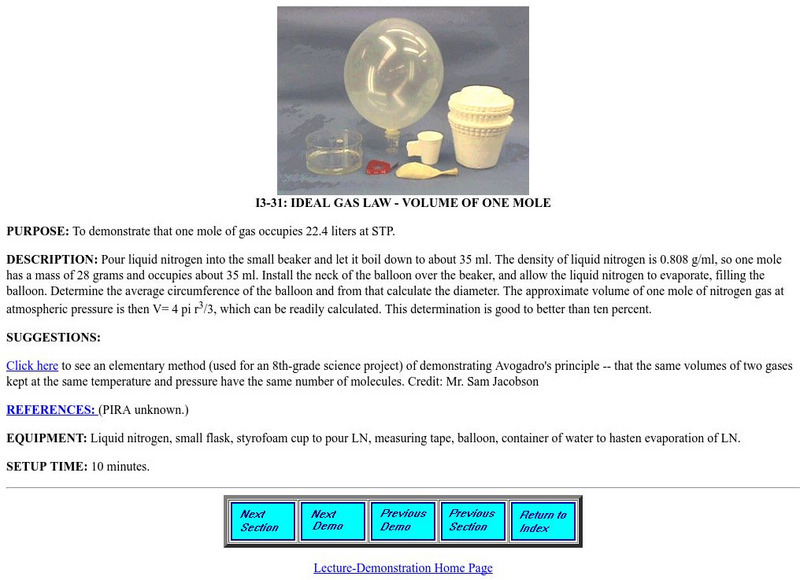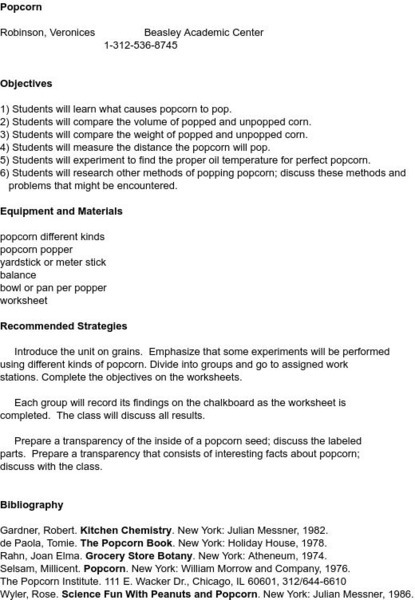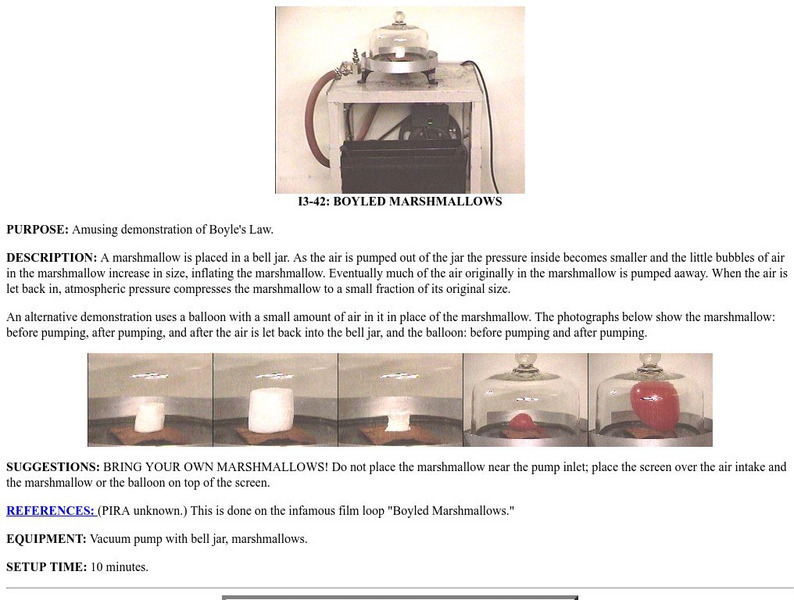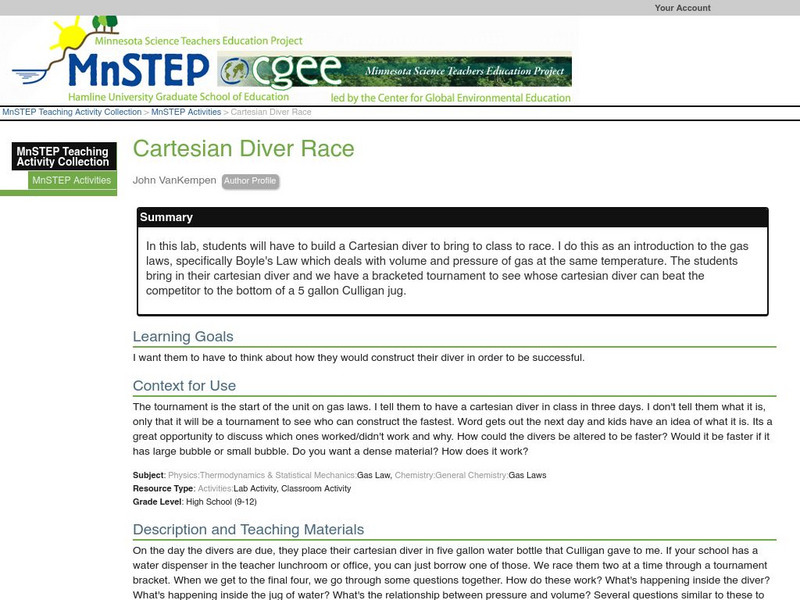Hi, what do you want to do?
Teach Engineering
Efficiency of a Water Heating System
Tired of waiting for hot water? Groups of three determine the efficiency of an electric water-heating device. They calculate the amount of energy it takes to heat the water and the theoretical amount of energy required to heat the water....
Pingry School
Kinetics of the Acid Decomposition of Thiosulfate
Several factors affect the rate of a chemical reaction including temperature, surface area, and concentration. Using an experimental approach, learners explore the effect concentration has on this rate while maintaining consistency with...
Curated OER
Scientific Notation III: Linear vs Exponential
Students examine the differences in exponential growth and linear growth of a system. They interpret data on graphs and develop their own charts. They answer discussion questions as well.
Curated OER
Energy of Activation
High schoolers determine the activation energy of a chemical reaction.
Science Education Resource Center at Carleton College
Serc: Mini Lab: Investigating Gas Laws
In this activity, students investigate two gas laws: Charles and Boyle's. They will determine the relationship between gases and certain variables (temperature, volume and pressure), then watch a demonstration and determine what...
University of Oregon
Virtual Lab: Ideal Gas Law
This interactive lab investigation shows students in three experiments how the Ideal Gas Law works.
University of Maryland
University of Maryland: Ideal Gas Law Volume of One Mole
A page from the University of Maryland Physics Lecture Demonstration Facility. Provides directions for a teacher demonstration of the ideal gas law. Shows apparatus and set-up; provides suggestions. Easily adaptable as a student project...
Alabama Learning Exchange
Alex: Gas Laws
The teacher will perform a demonstration of imploding a coke can. We will then discuss Boyle's law. After this discussion, we will conduct the science in motion lab "Boyle's Law". Each lab group will load their graphical results into a...
Texas Instruments
Texas Instruments: Gas Lab
Students determine the molecular weight of a pure gas in a balloon by using gas laws and trapping the gas in a glass bottle. Students watch the instructor demonstrate the lab on day one. On day two and three they practice the lab. On day...
Science Education Resource Center at Carleton College
Serc: Observing the Effect of Temperature on Change of State and Gas Pressure
This lab serves as a short introduction to both changes in state and air pressure/the gas laws. The students will heat a small amount of water in an aluminum can. They will then invert it in a bucket of cold water and crush the can using...
University of Nebraska
David Brooks: Henry's Law Experiment
At this site learn about Henry's law through this hands-on experiment. Lab instructions are complete including step-by-step pictures an worksheet.
Science and Mathematics Initiative for Learning Enhancement (SMILE)
Smile: Popcorn Is a Gas
From the Science and Mathematics Initiative for Learning Enhancement (SMILE) program. A lesson plan in which students explore the pressure-temperature-volume relationships by performing a popcorn lab investigation. Intriguing. Great...
Science and Mathematics Initiative for Learning Enhancement (SMILE)
Smile: Four Air Pressure Labs
Four lab exercises from the Illinois Institute of Technology demonstrating air pressure are given.
University of Nebraska
Do Chem: Graham's Law
A lab setup, fairly simple, to illustrate Graham's Law. Check it out!
Science and Mathematics Initiative for Learning Enhancement (SMILE)
Smile: Relationships: Pressure, Volume, and Temperature
From the Science and Mathematics Initiative for Learning Enhancement (SMILE) program. A lesson plan that centers around a lab investigating the gas laws of Boyle, Charles, and Gay-Lussac. Data is collected, analyzed and discussed.
University of Maryland
University of Maryland: Boyled Marshmallows
A page from the University of Maryland Physics Lecture Demonstration Facility. Provides directions for a teacher demonstration of Boyle's law. Shows apparatus and set-up; provides suggestions. Easily adaptable as a student project or lab...
Science Education Resource Center at Carleton College
Serc: Mn Step: Temperature Volume Relationship of a Gas
A lab activity where students investigate the relationship between temperature and volume using a plastic syringe with a stopper. The syringe, filled with trapped air, is placed in a hot and a cold water bath, and temperature and volume...
Science and Mathematics Initiative for Learning Enhancement (SMILE)
Smile: Solubility of Gases in Liquids
Lab activity where students determine the relationship of pressure and temperature on gas solubility.
Science Education Resource Center at Carleton College
Serc: Cartesian Diver Race
In this lab, students will have to build a Cartesian diver to bring to class to race. I do this as an introduction to the gas laws, specifically Boyle's Law which deals with volume and pressure of gas at the same temperature. The...






















